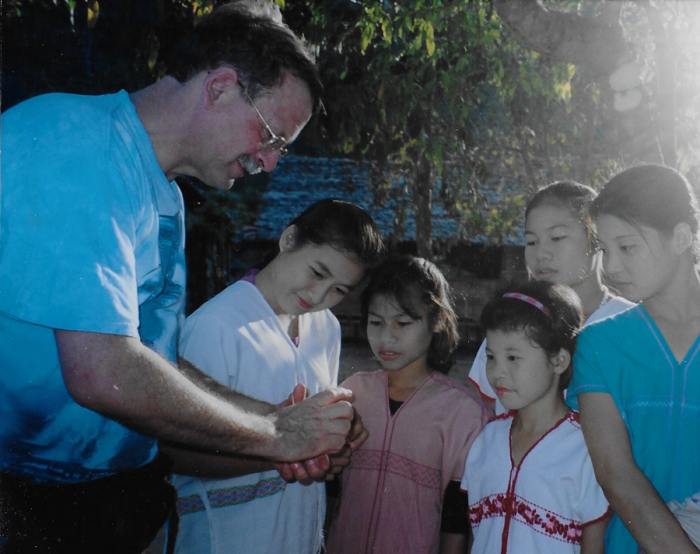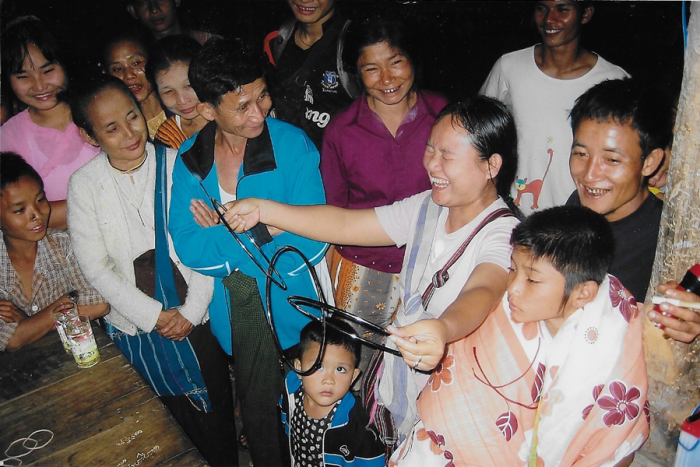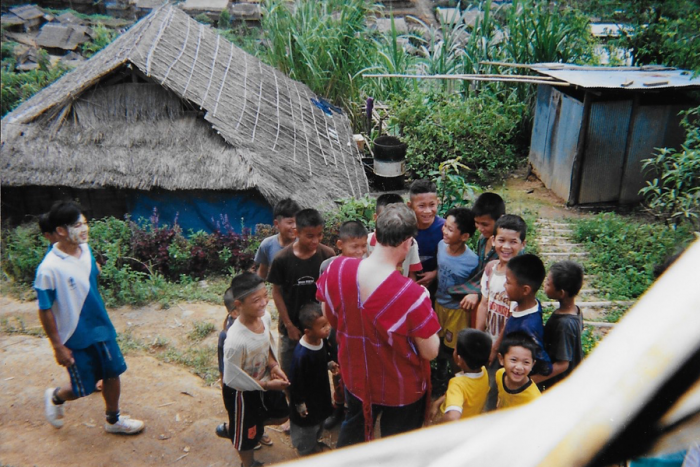1. JUNGLE TERROR
The night had been unseasonably warm in Paw Soe’s Karen (kah wren) village, nestled deep in the eastern Burmese jungle-covered mountains. Her two young daughters slept well in their bamboo hut without needing to cuddle like puppies with their mother to share her body warmth. After the recent successful rice harvest, Paw Soe felt content knowing that her daughters would not go hungry during the upcoming dry season.
If only her husband were here to enjoy this family time with her and the girls. Unfortunately, he had left six months earlier to join the Karen National Liberation Army (KNLA), representing the largest of the minority hill tribes living in the eastern mountainous regions of Burma. This poorly equipped military force of 10,000 Karen soldiers was tasked with defending two million Karen villagers from the huge modern Burmese Army, known as SLORC (State Law and Order Restoration Council).
As Paw Soe prepared a breakfast of rice and jungle greens flavored with fish oil and slices of diminutive but potent chilies, she thought about the unsettling events of the past two weeks. Unannounced, a SLORC platoon had marched into her village, the only home that she had ever known. One of the soldiers demanded in loudly barked orders that the villagers assemble immediately. The Karen village leaders were ordered to step forward. The stern commanding military officer demanded that the village prepare one hundred twenty kilogram sacks of rice and provide ten male volunteers for porter duties – all to be ready in two weeks. By now, all the people of the village had gathered, but kept their distance from the soldiers and the village leaders.
Concluding his presentation, Burmese major strutted arrogantly to the group of five village leaders and planted himself directly in front of each man for a few moments, with a silent glaring stare and a teeth-clenched scowl. Retreating twenty feet, he grabbed an AK-47 assault rifle from his aide, raised it, and fired the entire forty-round clip into the air while flashing a devilish grin. Paw Soe had never heard a noise so loud and so close. Her ears were still ringing as the soldiers performed an about-face in unison, and marched out of the village.
Paw Soe had heard stories of similar events in other Karen villages for years, but theirs was deep in the forest and far removed from any roads navigable by truck. The last news that the elders heard regarding SLORC was that the enemy soldiers were still far away.
More than forty years earlier, the Karens had first formed a resistance force to defend Karen interests. After Burma had achieved independence from Britain after World War II, attempts at forming a stable democratic government were short-lived. Since the 1960s, the tyrannical ruling military junta’s brutal ethnic cleansing campaign had targeted rural and remote ethnic minority hill tribes, including the Karens. Even if their villages were not immediately threatened, many Karens felt a patriotic duty to defend their homelands and their people. And so it was that Paw Soe’s husband joined the KNLA after the fields were tilled and the rice crop planted. These volunteers were committed to preserving their traditional way of life for their families, the same good life that Karens had enjoyed for centuries. Paw Soe understood that if her remote village was now threatened, much of the Karen’s homeland of Kawthoolei was at serious risk. The appearance of the soldiers brought the civil war up close and personal.
The village elders met nightly to weigh options. Providing SLORC with the demanded rice ration would empty their storage barn, ensuring hunger and possibly starvation for everyone during the upcoming dry season. Conscripted porters oftentimes never returned. Many of the younger village men had already departed to enlist in the KNLA, and the remaining men were all necessary to provide for the needs of the women, children, and seniors. Since they knew of no nearby SLORC base camp, the leaders hoped that this demand by the major was a bluff. If the village lost its food and manpower, the village was doomed anyway.
They elected not to comply.
What the villagers did not know was that the commanding officer of a SLORC base in a neighboring mountain range had received new orders from Rangoon to extend the existing dirt road eastward for twenty kilometers. Fresh SLORC troops were due to arrive soon that would require both rations and conscripted laborers for the roadwork. With the harvest in, readily available rice and manpower could be found in numerous small Karen villages along the proposed route. SLORC scouts had reported that no significant KNLA force was in the immediate vicinity. Paw Soe’s village seemed to be easy pickings for the SLORC major. After all, Burma was for the Burmans – not for these subhuman illiterate jungle savages from other tribes who existed only to be used and discarded.
On the day before the demanded delivery date for the rice and porters, three SLORC soldiers arrived in the village to make final arrangements for the transfer. When told of the village’s decision not to obey, the squad left without any further discussion. Maybe, just maybe, the elders thought, once the major realized that their insignificant village had little to offer, he would take his troops elsewhere in search of a larger prize.
Unfortunately, the SLORC commanding officer did not take their denial well. He expected his orders to be obeyed, and so a lesson must be taught to these miserable Karens.
The following morning, as Paw Soe squatted in front of her cooking fire stirring rice into the boiling breakfast water, she heard three distant unfamiliar muffled whumph sounds in rapid succession, each combined with a muffled metal clang. Within a few seconds, a thunder-like explosion threw her and the woven bamboo wall of her hut several feet through the air and onto the nearby dirt ground leaving her temporarily deaf and stunned. BLAM! BLAM! Two more mortar rounds blew up in quick succession, sending bamboo and teak fragments from a neighboring hut that received a direct hit tearing through what was left of Paw Soe’s home. Village children screamed as the air filled with opaque clouds of thick white smoke and brown dust carrying the stench of spent gunpowder and burning bamboo.
When Paw Soe looked up, she saw several of her neighbors lying charred and motionless in expanding pools of blood on the dusty jungle floor. Despite Paw Soe’s ringing ears, she could clearly hear rat-ta-tat-tat bursts from the SLORC AK-47s.
Quickly coming to her senses, Paw Soe grabbed her two fortunately unharmed daughters, a sack of rice, a cooking pot, spoons, a plastic sheet, two blankets, and her Bible, then scurried with her neighbors into the surrounding deep forest.
Paw Soe’s village had now joined a forty-year-long list of thousands of similar ethnic minority hill tribe villages that the ruling Burmese military junta had deemed not worthy of existence. That day, Paw Soe and her daughters joined the million other desperate internally displaced persons (IDPs) roaming the remote jungle mountains of Burma.
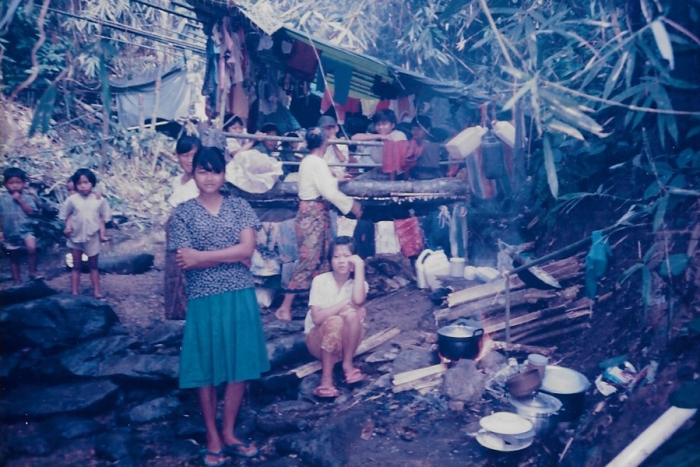
2. THE JOY FOUND IN HEALING
Paw Ngwe, a short, smiling Karen lady in her early fifties, could not remember a single day in her entire life when she was free from a gnawing pain under the skin on the outside of both her upper thighs. Even as a young girl, she remembered the same tender lumps being there. Any trauma, from a gentle bump to falling down and landing on her side, would lead to an initial sharp piercing pain followed by a dull ache lasting minutes to hours. Lying or sleeping on her side was out of the question.
Through her social network, Paw Ngwe had heard about an American surgeon who would operate on Burmese refugees for no cost with good results at the Mae Tao Clinic. Hopeful that she could be helped, Paw Ngwe spent two days traveling to the clinic during my scheduled time there. After hearing her story, I was unaware of any medical conditions that matched her history, symptoms, or clinical findings, especially since her problem had been present since early childhood. On examination, I could palpate five or more irregular, rock-hard masses the size of small marbles under the skin of both her upper lateral thighs. There were no named lymph nodes in this location. The lumps were slightly mobile, and apparently had not grown into the overlying skin, or into the underlying muscle. To have been present for fifty years and still be of a somewhat small size, the masses could not be cancer, but what were they?
I was professionally curious about the nature of Paw Ngwe’s pathology, and after my examination, I felt confident that I could eliminate her nemesis through four-inch vertical incisions on each thigh. Excision of the masses and a cleanout of a lifetime of scar tissue surrounding them should be a straightforward surgical exercise for me, as there were no major anatomic structures in the local neighborhood. Best of all, removal of these masses had a good chance of at least reducing, if not eliminating, her pain.
As usual, Eh Tah Mwee’s spinal anesthetic was successful, so with Paw Ngwe lying on her back, both lateral thighs were prepped and draped. A pinch of her skin with forceps at the incision site yielded no response, confirming adequate anesthetic. My three-inch incisions went through normal skin and a half-inch of subcutaneous fat before I encountered several small white, marble-sized, irregular masses resembling calcified pieces of miniature cauliflower. I excised them all, including any abnormal tissue down to her muscles, leaving normal fat under her skin for padding and comfort. After copiously washing out seen and unseen remaining debris, I closed the incisions in two layers.
Paw Ngwe remained in the hospital for five days. Under my daily observation, her wounds healed quickly and normally, with no redness or underlying pockets of fluid requiring drainage. Best of all, her pain was gone when the spinal wore off on the afternoon of surgery.
I remained perplexed about what caused Paw Ngwe’s problem, and just what I had actually removed, until a late night discussion with some Karen friends. When Paw Ngwe was a child in the Burmese jungle, most health care was provided by the village witch doctor. One of the treatments for high fevers, so I learned, was injection of fresh coconut milk. If he did it with good sterile technique and since the milk itself was sterile, the expected consequence of an abcess might not occur. Instead, the coconut juice could remain there in a small pocket, and eventually turn into an irregular rock by attracting calcium. Surrounding scar tissue would be stimulated to grow and nerves in the area would become irritable and easily stimulated by the masses. The clinical picture would be equivalent to walking with a stone in your shoe. Paw Ngwe had pathology foreign to Western medicine. As a surgeon, I saw a mechanical problem that required a mechanical fix, and was happy that I could be there for her.
A year later, on my final night at the Mae Tao Clinic, I was preparing for my customary going-away magic show, with a finale of treats for the patients, hospital staff and families. As the audience began to gather, I immediately recognized a familiar face across the room – Paw Ngwe. When she learned that I was back at the Clinic, Paw Ngwe decided to travel the two days to see me, just to thank me again for being there to help her. Since the night of her surgery, Paw Ngwe had remained free from her pain, an answer to her lifelong prayers and dreams.
Although we did not speak the same language, Paw Ngwe’s hug of gratitude said more than words ever could.
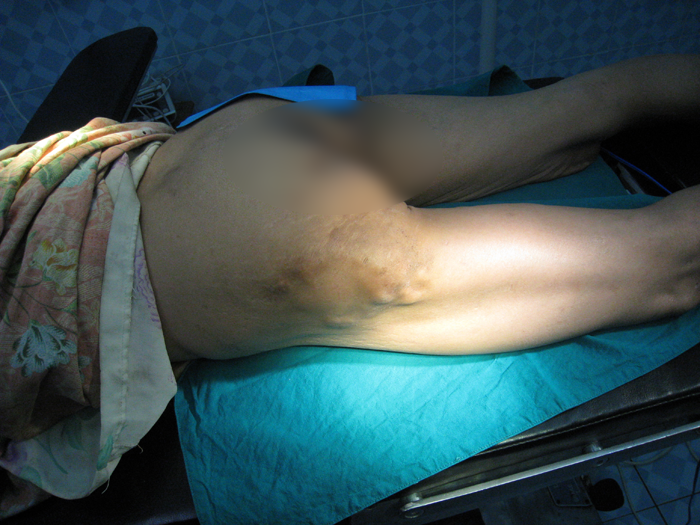
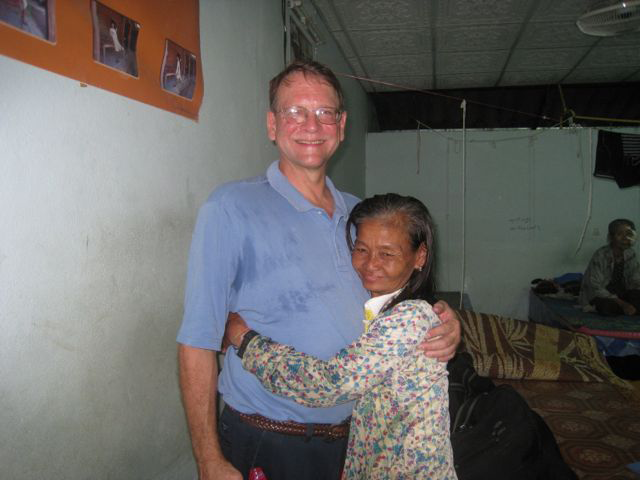
3. CHILDHOOD DELIGHTS
When I was a young boy, my friends and I played marbles, usually for keeps. The best players had the biggest bags and the most interesting marbles; crystal boulders were coveted prizes. Karen boys played the same game, only with rubber bands. They drew a circle in the dirt and each player anted in a few rubber bands. The boys took turns shooting a rubber band at those inside the ring. Knock a rubber band out and it’s yours to keep. I found the resemblance to my childhood marbles game uncanny. We all had our favorite “shooter” marble, and it seemed reasonable to assume that these boys must also have had a favorite “shooter” rubber band, one with just the right length-to-tension ratio.
In Htoo Wah Loo, rather than in soft leather marble bags, the winners wore their trophy rubber bands on their wrists as a sign of machismo. The champs were easy to spot, ten-year-old boys strutting around confidently sporting a wad of a hundred or more rubber bands on their bony wrists. Very impressive when you knew how the bands were acquired, one by one.
These young studs created an unresistable opportunity. I had been a magician since I was eight years old. During early evening strolls through Htoo Wah Loo, I occasionally came upon a group of Karen boys just hanging out, their rubber band trophies on full display around their wrists. I’d walk up and point to the wrist carrying the thickest collection. I’d look the kid in the eye, smile, and give him a thumbs-up to acknowledge that he was the man. He would smile back as others gathered around to investigate what was transpiring. Since my Karen language skills were marginal, and sign language is universal, I simply held up two fingers, pointed to his wrist packed with the bands, and then pointed back to myself while nodding and smiling. The boy in question would always glance at his pals for guidance and they would invariably nod with approval.
My volunteer peeled off two random rubber bands and passed them to me. I smiled and again flashed him a thumbs-up. After forming the letter “C” with the index finger and thumb of each hand, I stretched a band over the thumb and fingernail, linking them together by forming two interlocked letter “D’s”. Next, by wiggling my wrists that slid the rubber bands against each other with no perceptible finger motion, my hands were now free, unlinked, and separated. The rubber bands had not moved off my fingers or thumbs. The borrowed rubber bands had actually melted through each other.
Jaws dropped, eyes opened wide, and chatter ensued. Of course, the boys all wanted a repeat performance. I was sure that they had never imagined, let alone seen, anything like this before with rubber bands. When I was their age, I certainly hadn’t. I was happy to repeat the trick and then returned the unharmed rubber bands with a smile and a nod. The rubber bands were always passed around and closely inspected by all. I would usually begin, completely unannounced, with a group of maybe five to ten boys, and within a few minutes, twenty or more would have gathered. Magic in Karen villages seemed to be wired into an unseen human telegraph system, and I was the Pied Piper.
A walk around a Karen village at twilight was a strolling entertainer’s delight. The children had no distracting TVs, nor with few exceptions, any other electronic media. They had to make their own fun with whatever was available. Although some may have heard of magic, few, if any, would have ever witnessed a live performance. Like most Southeast Asians, many of these jungle people, both children and adults, sincerely believed in a world filled with a wide variety of interactive spirits. I often wondered just how they took my magic.
